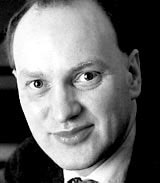The Tweels are coming
The wheel is a fantastic invention, but that doesn’t mean that it can’t be bettered. Hugh Pearman considers Michelin’s efforts to replace the pneumatic tyre

Reinventing the wheel. I’ve always loved that idea. Why not reinvent it? Just because it has served mankind well for thousands of years doesn’t mean that some non wheel-like device might one day supersede it. Plenty of civilisations managed without it. The Aztecs had neither the wheel nor metal. This was a bit of a disadvantage when the conquistadors rolled up, but until that point they did fine. Lack of wheels didn’t stop them building amazing cities and forging a successful empire.
A leading architect recently announced, as if he had had a heavenly vision, that it was OK for modernist architects to abandon their obsession with all-glass facades and do something solid. With windows punched in it. This caused hilarity among more traditionally minded architects. What’s the point, they chortled, of reinventing the ancient idea of the solid wall?
Well worth a shot, I’d say. If someone approaches from first principles the idea of a solid wall with windows in it, as if such a thing hadn’t existed, that person may well come up with something that advances architecture. Old technology hasn’t changed since the invention of the breeze block.
But back to the wheel. I’ve always admired car tyres as well-designed objects. Unbelievably well-designed objects, in fact. Tyres perform so well that you never have to think about them. They now last so long that many people never replace them before they change their car. They hold you on the road even though only a tiny patch of them is in contact with it at any given moment. They make full use of an abundant free substance: air. Tyres are great, but someone has just thought of something better.
Well, of course they have. The pneumatic tyre, like the internal combustion engine, is a 19th century invention. John Boyd Dunlop came up with the idea to make tricycling more comfortable for his sickly son. Great – but isn’t it about time a new Dunlop devised something better?
Think about it, and you realise that the wheel has already been reinvented a few times, although history can play strange tricks on you. The caterpillar track, introduced in Edwardian times, is arguably an older concept than the wheel, since its basic principle is pretty much the same as the system they may have used to move the stones of Stonehenge – a recirculating system of rollers, aka tree trunks.
Then there was the Lunar Rover, that splendid fold-out lightweight electric beach buggy used by astronauts on the Moon. Pneumatic tyres would have exploded in space, so they devised alternatives made of a sort of springy mesh. Here we get to the nub: decades later, it is the Lunar Rover kind of wheel that is being seriously considered by Michelin as a replacement for the pneumatic tyre.
The thinking is straightforward: instead of having a wheel with a separate tyre on it, why not have an integral wheel-tyre, which does everything at once – spins, grips and cushions? Not needing air inside, it does not need to have its pressure adjusted and would be able to drive over broken bottles and rusty nails with total impunity. Today’s tyres are pretty marvellous, but the Tweel, as Michelin’s American engineers are calling it, would remove all the residual inherited weaknesses of Dunlop’s invention.
Michelin should know, as they made the first air-filled tyres for an automobile, a racing car of the early 1890s. They have already made and tried out some Tweels, and reckon they will last two or three times as long as conventional tyres. When the surface does wear out, they just need a re-tread rather than a complete new tyre.
But even this is anything but new. In the componentry of the Tweel and you find the following: a hub, spokes, a rim around the spokes and the rubber ‘tread band’. Does this remind you of anything? Of course it does. It is a cartwheel. It is just a clever kind of cartwheel where the spokes and the rim provide the cushioning provided by air in a conventional tyre.
You’ll not find Tweels on your car for a while yet. They work fine but, so far, they are too noisy. That will no doubt get fixed. The goal of the airless, longer-lasting, virtually indestructible car wheel is getting closer.
QED – you can reinvent the wheel. And you do it by going back to first principles. After all, the word ‘tyre’ originally described the iron rim fitted to a wooden cartwheel. From Stonehenge via Constable’s Hay Wain and the Moon we have – ahem – come full circle.
Please e-mail comments for publication in the Letters section to lyndark@centaur.co.uk
-
Post a comment



